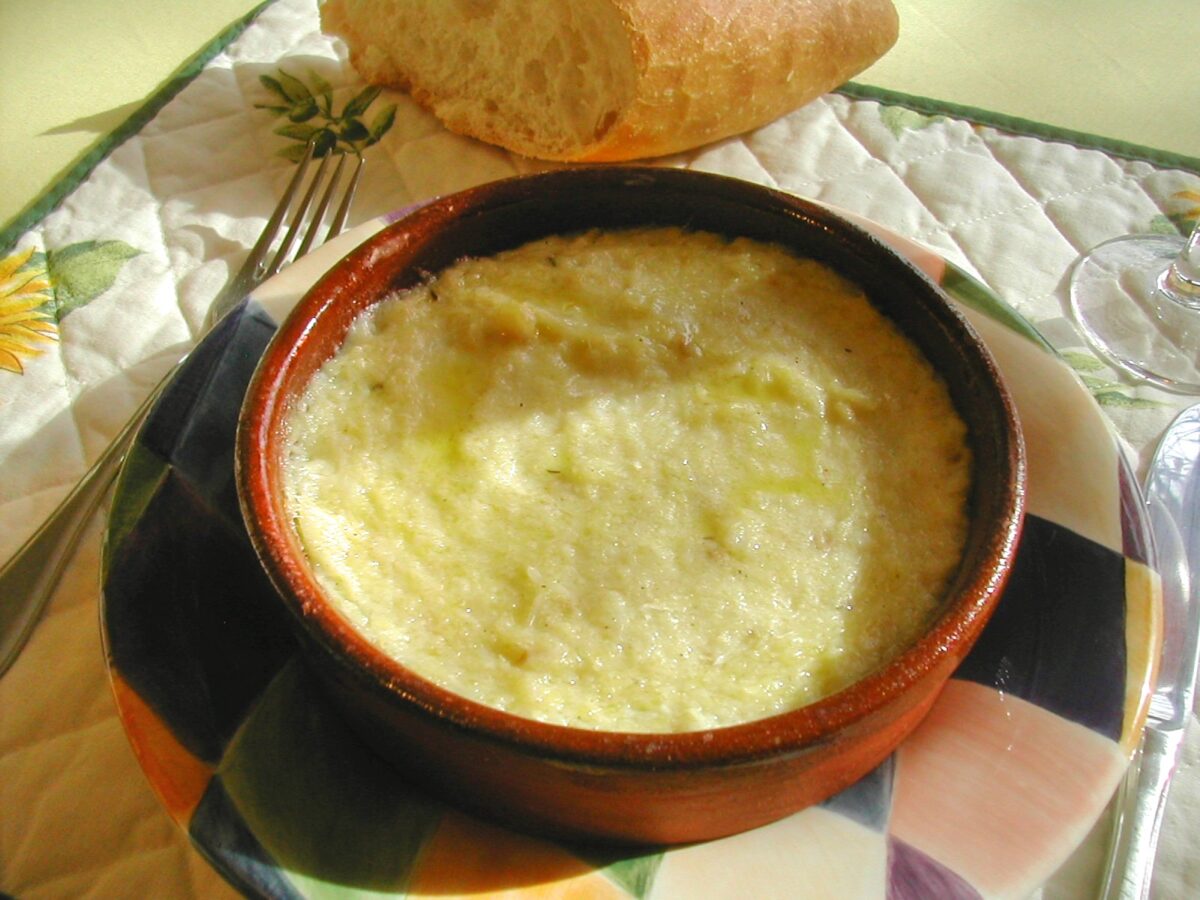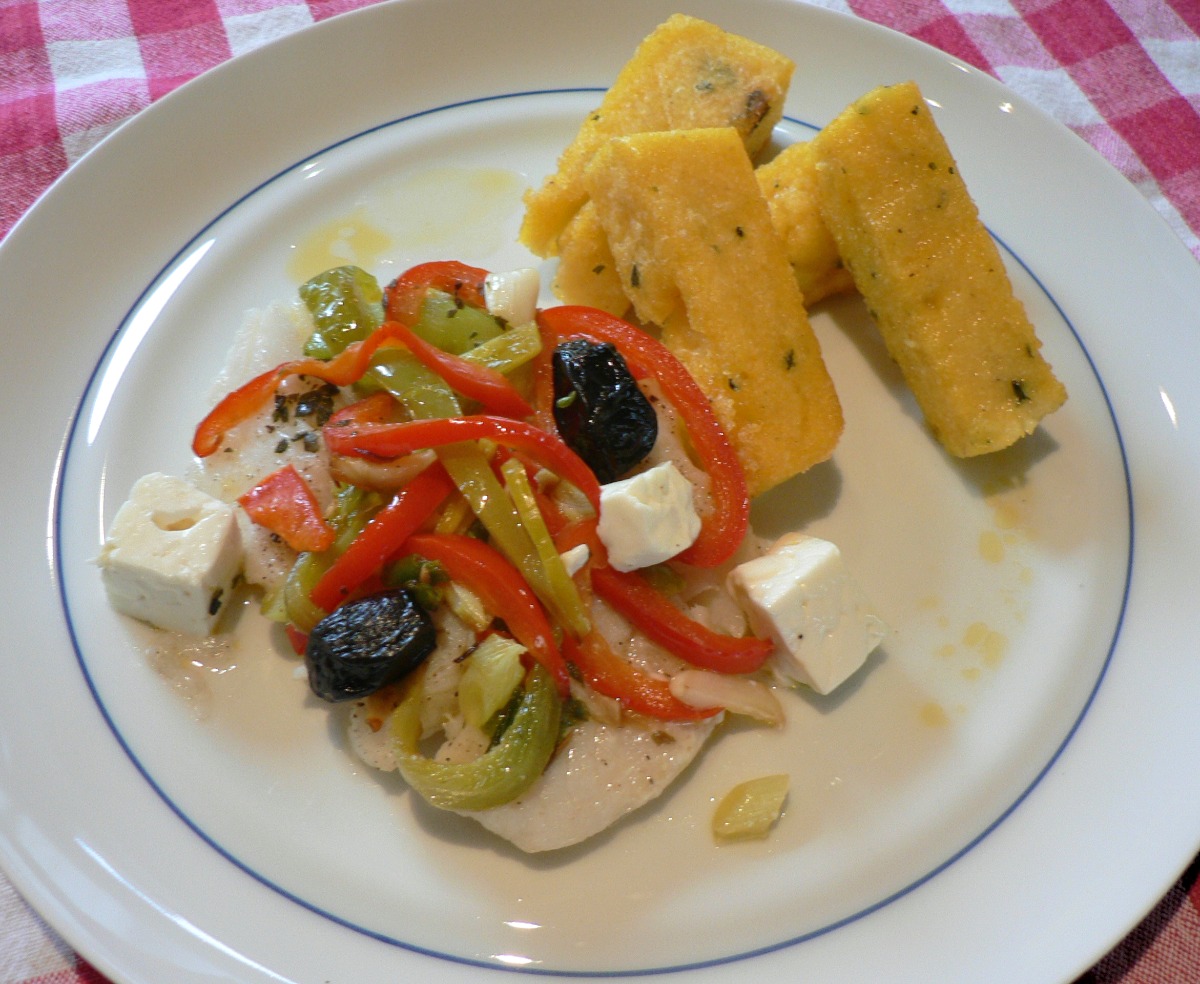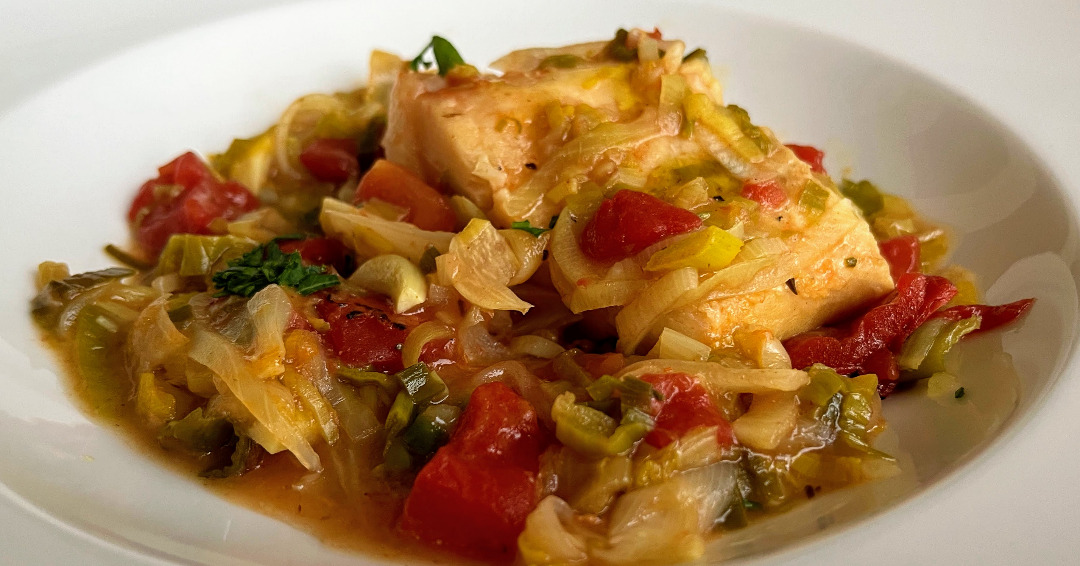Salt Cod and Potato Purée, a classic recipe from the Provence. In the Provencal language “brandar” means to stir and “morue” means codfish in French. The story goes that in the 18th century a certain Messieur Durand, a very creative cook from Nîmes, had the idea of flaking the cod, mixing it with olive oil and seasoning it with thyme, bay leaf, and pepper. Thus, the authentic Brandade is devoid of potatoes. As salt cod is fairly expensive it became customary to add potato purée to stretch it. The more refined version adds a bit of Persillade, which is what I do in this recipe.
Around the Mediterranean salt cod imported mostly from the Lofoten Islands in Norway is a much-beloved dish. Always choose the thickest part, middle section, and make sure there are not too many bones.
Yield: 4 servings
Time: 40 minutes plus 24-48 hrs desalting in advance
Ingredients:
Salt Cod:
- 1 lb (450 g) potatoes, peeled, cooked and mashed
- 1 1/2 lbs (675 g) salt cod, desalted
- freshly ground pepper
- 1/2 tsp thyme
- 1 bay leaf
- 1 cup (225 ml) light cream, warmed up, not boiled
- breadcrumbs and paprika for sprinkling the top (optional)
Persillade:
- 1/2 cup (14 g) flat-leaf parsley, finely chopped
- 2 garlic cloves
- salt and pepper to taste
- extra virgin olive oil
- white vinegar or lemon juice or to taste

Bacalhau is a fish, traditionally codfish, that is cured by dry-salting it. It’s a very old and sustainable method to preserve fish. Mostly associated with the Portuguese cuisine it also has its place in Spain (bacalao), Southern France (morue salée) and Italy (baccalà and stoccafisso).
Desalting bacalhau is absolutely necessary. How long you soak depends on the thickness of the cut and how dry it is. In my opinion it is best to soak it for at least 24 hours, may be 48 hours, changing the water 2 – 3 times a day. Supermarkets in Portugal often sell “bacalhau demolhado”, the already-soaked and desalted bacalhau. However its best to do a testrun first. Cook a small piece of cod in barely simmering water for 10 minutes and then let it cool. It should be mildly saline. Keep in mind that pan frying or roasting bacalhau, might cause residual salt to concentrate and render a saltier taste to the finished dish.
Preparation:
Preheat oven to 400°F/200°C.
Prepare the Persillade first: Mix chopped parsley and garlic. Add white vinegar or lemon juice and taste for salt and pepper. Add olive oil and mix it well until it forms a smooth paste.
Put the desalted cod in a large pot, add 1 bay leaf and 1/2 teaspoon thyme and cover it with abundant water. Bring it to a boil, simmer it gently for about 5 minutes and remove the pot from the heat. Leave the fish in the poaching liquid until it is cool enough to handle. Fish needs to be flaked while still warm. Check well for bits of bones. Discard poaching liquid.
Add mashed potatoes to salt cod in a mixing bowl. Mix them with the Persillade. Stir in the light cream little by little, alternating it with the Persillade. The cod-potato mix should resemble a smooth puree. If necessary, add more cream or olive oil. Adjust seasoning if necessary.
Rub 4 gratin dishes with olive oil. Spread the cod-potato mixture in it. Smooth the surface and sprinkle it with breadcrumbs and paprika. Drizzle a bit of olive oil over it, place it in the oven and bake it until top is lightly colored and bubbly. Take it out of the oven and let it sit for 5 -10 minutes. This dish is served warm not hot.
This is a traditional Christmas Eve dish in the Provence. Accompanied by fresh bread and a glass of red, white or chilled rosé wine – a pleasure!



